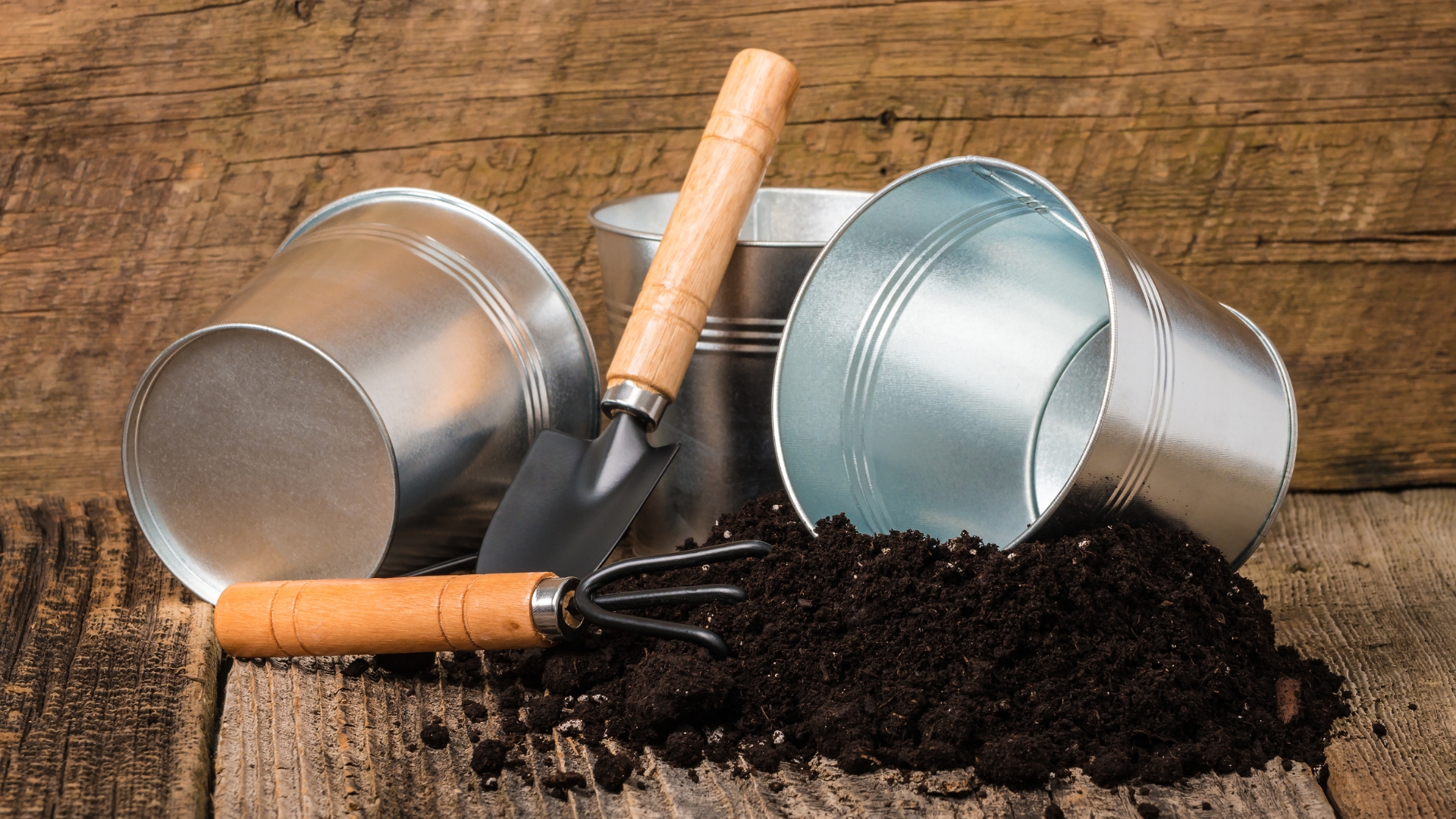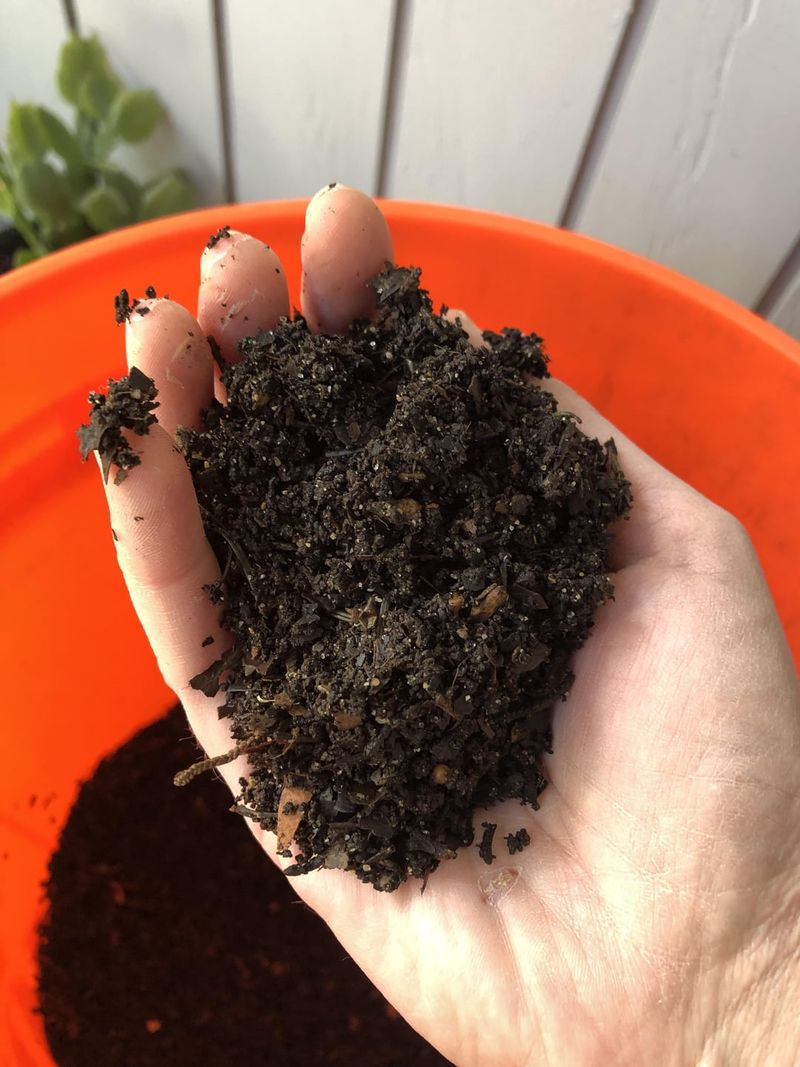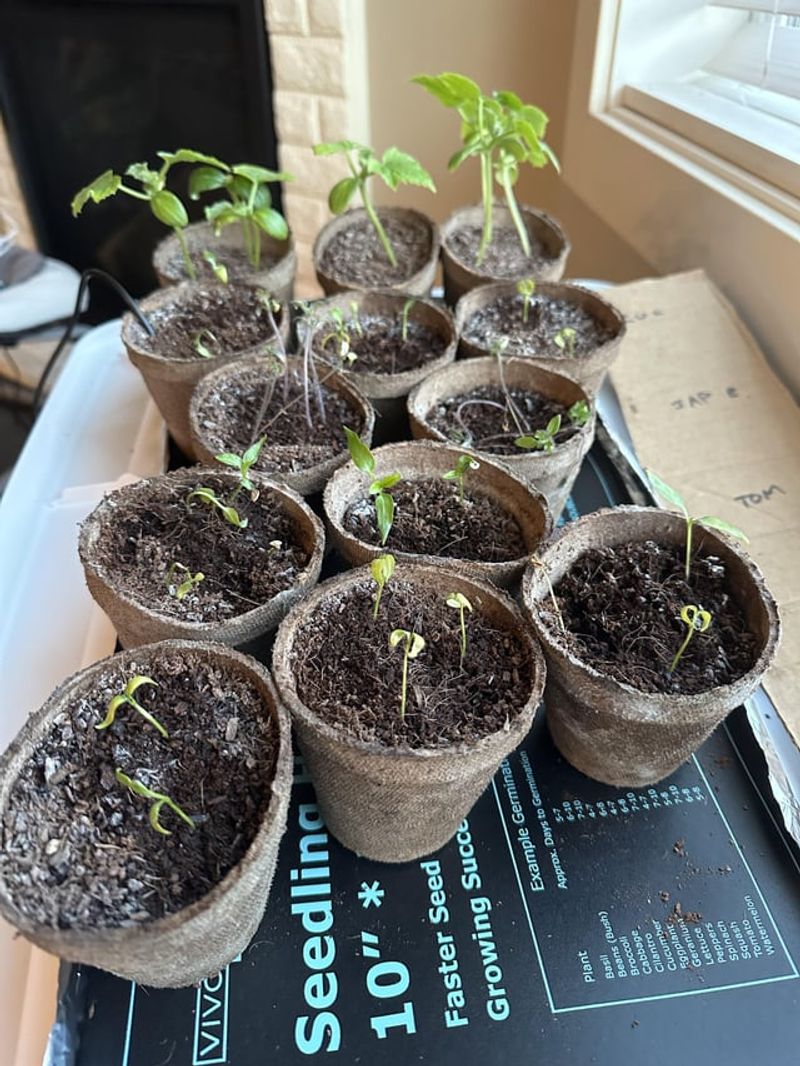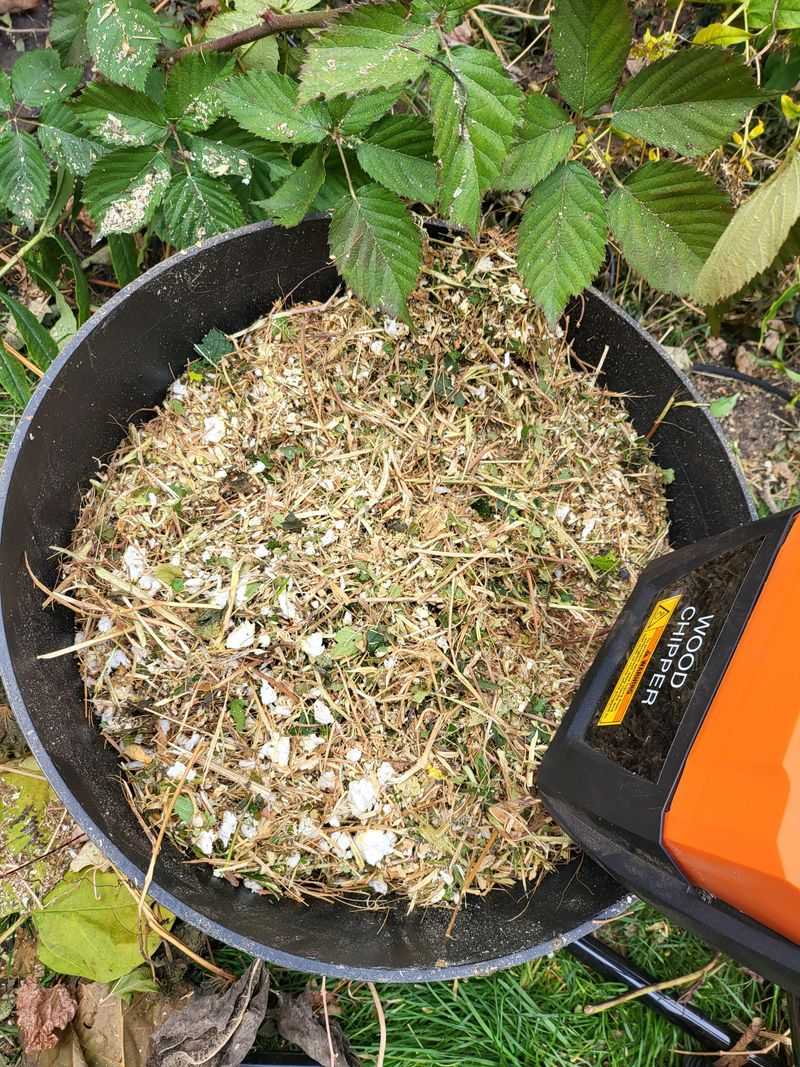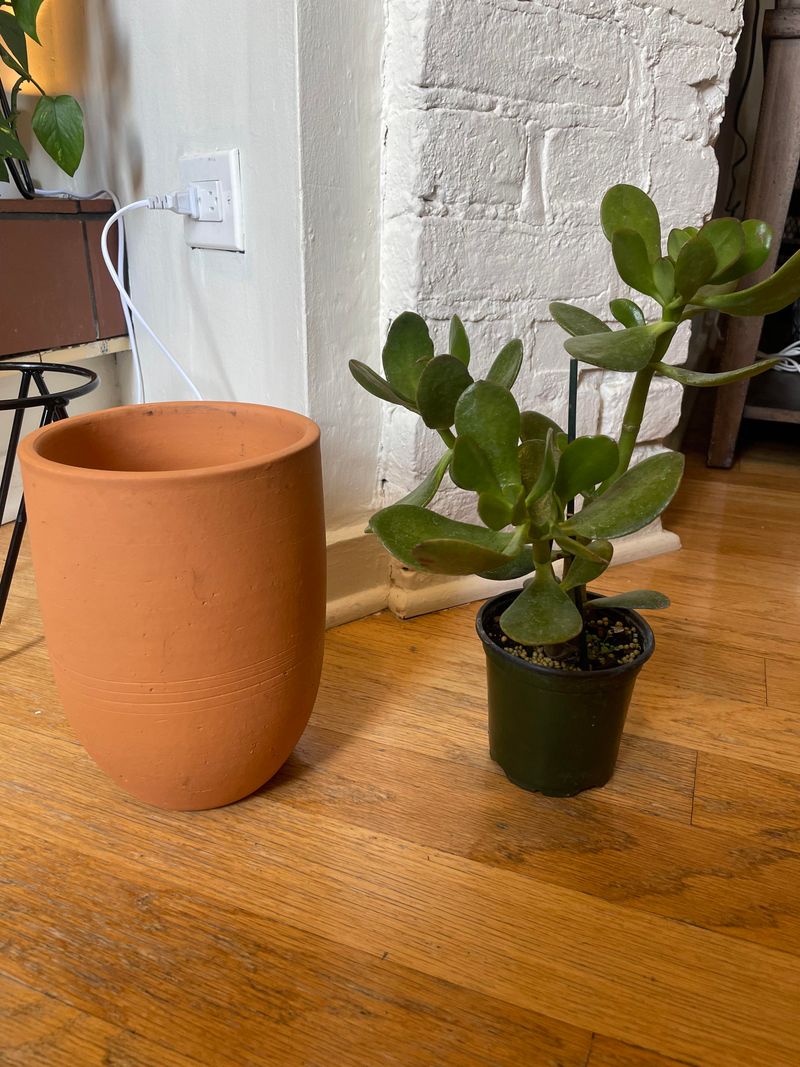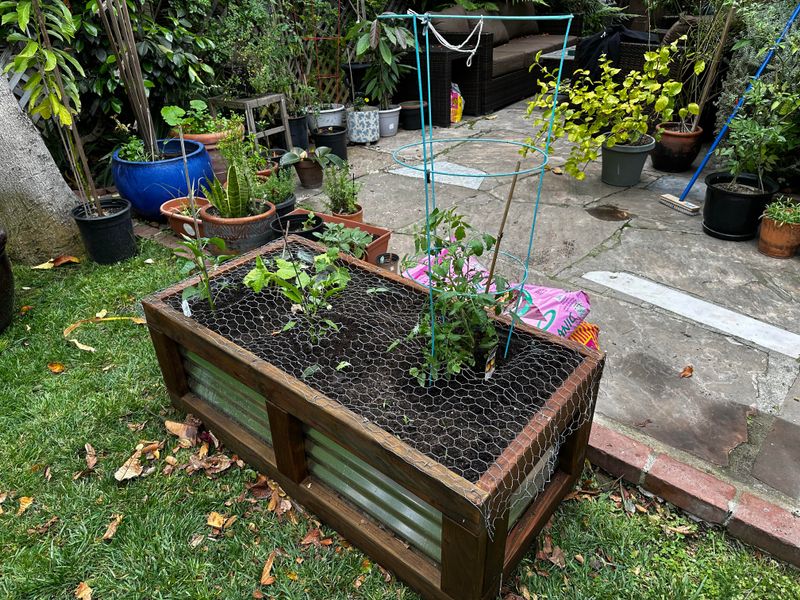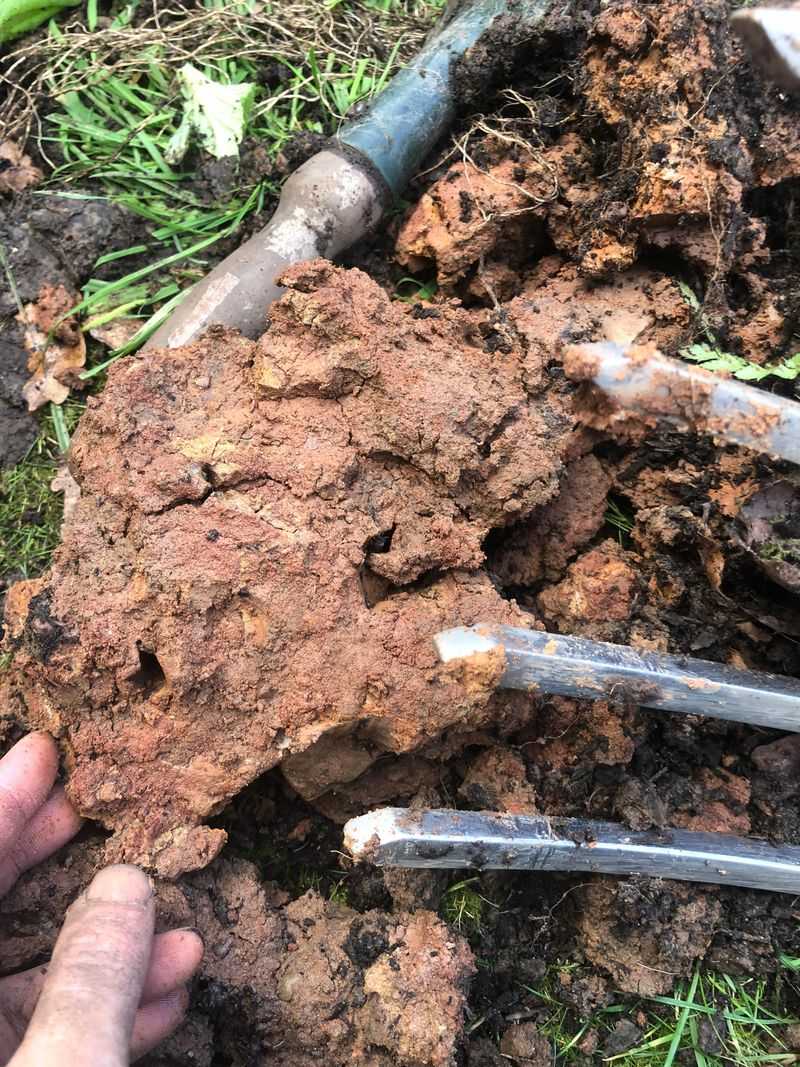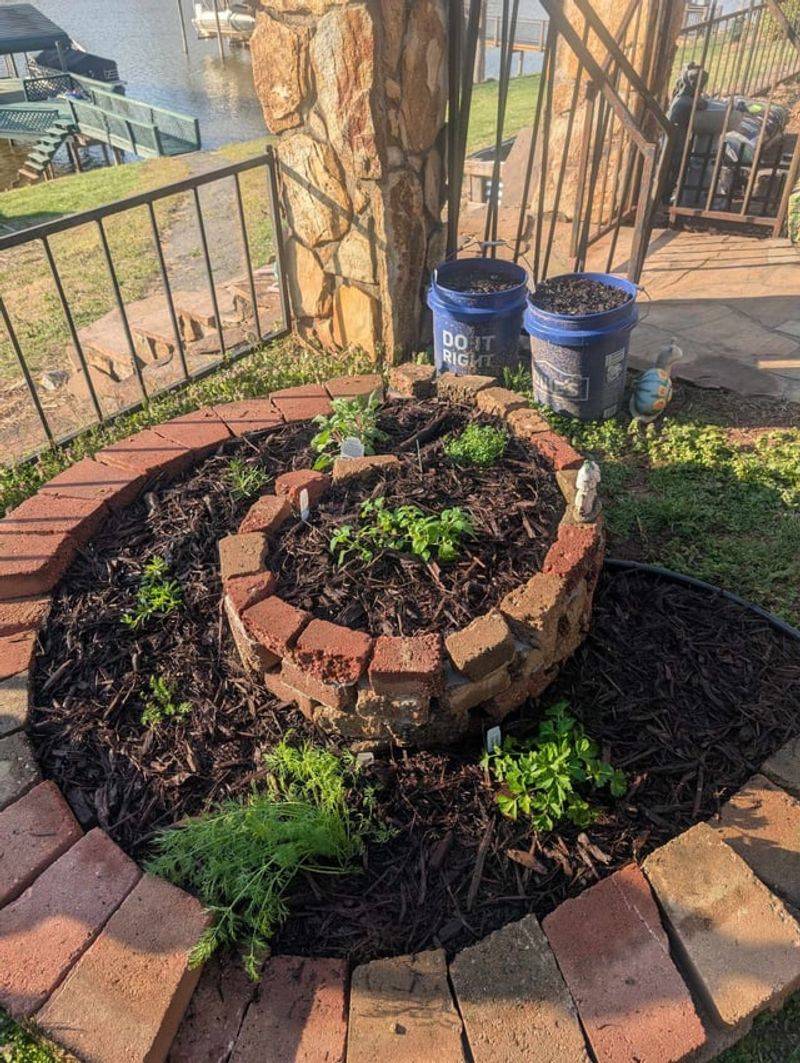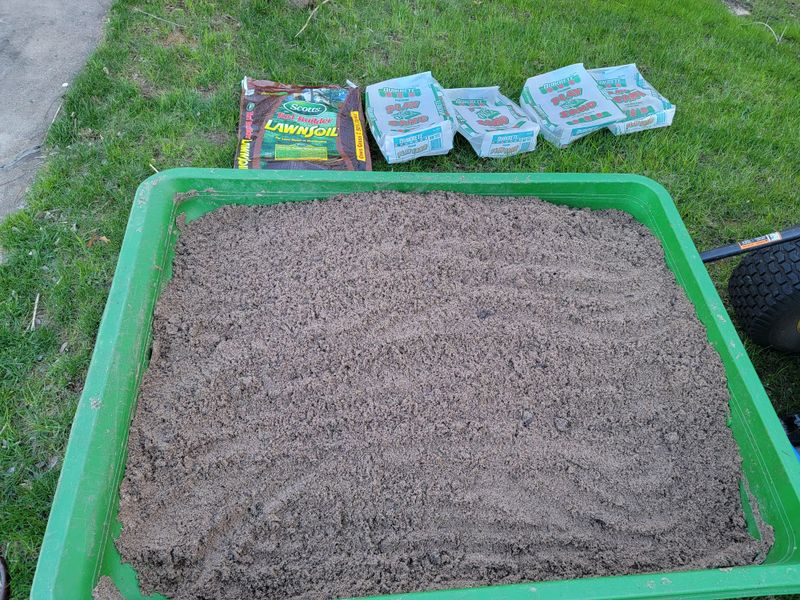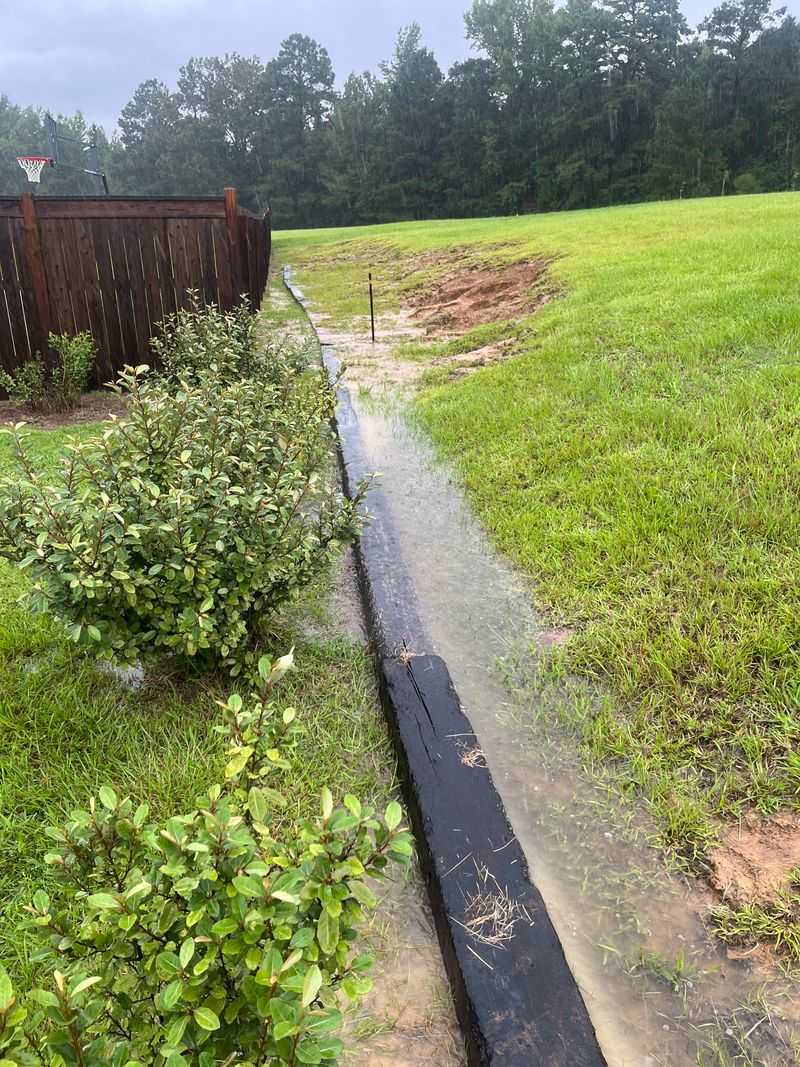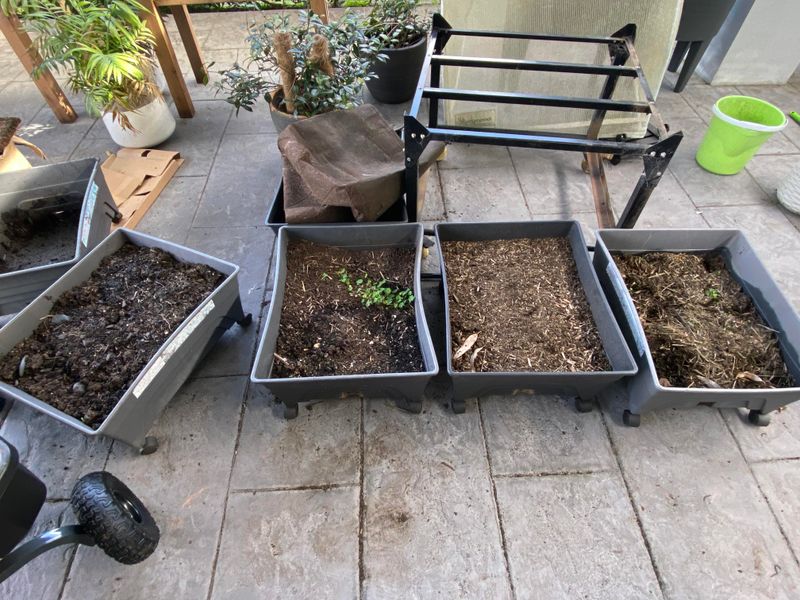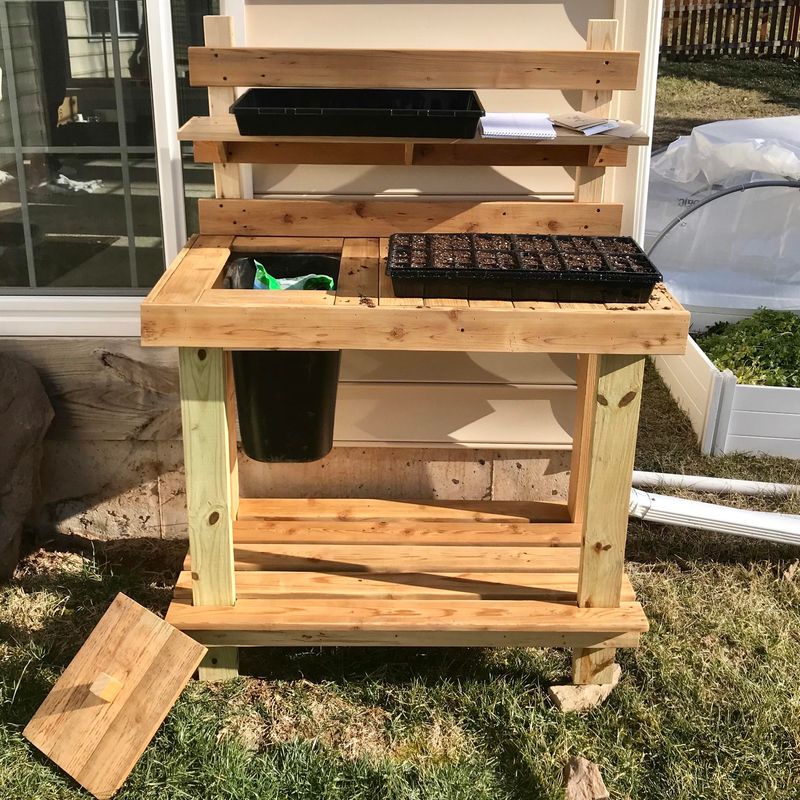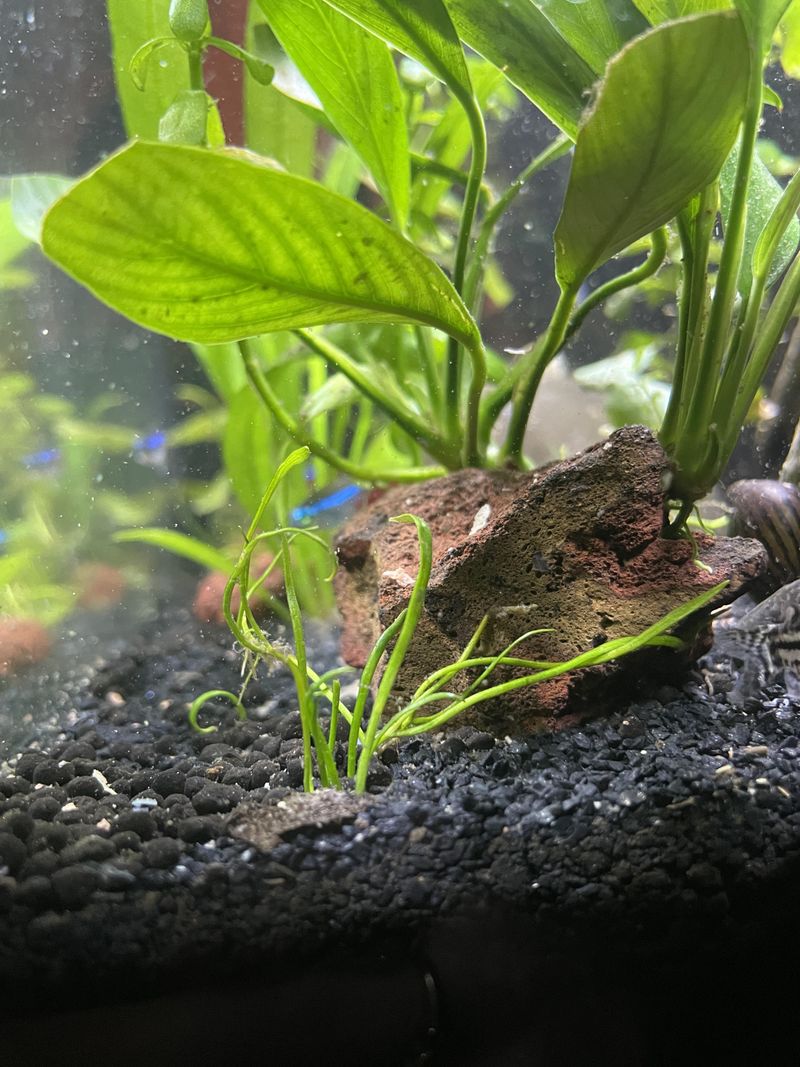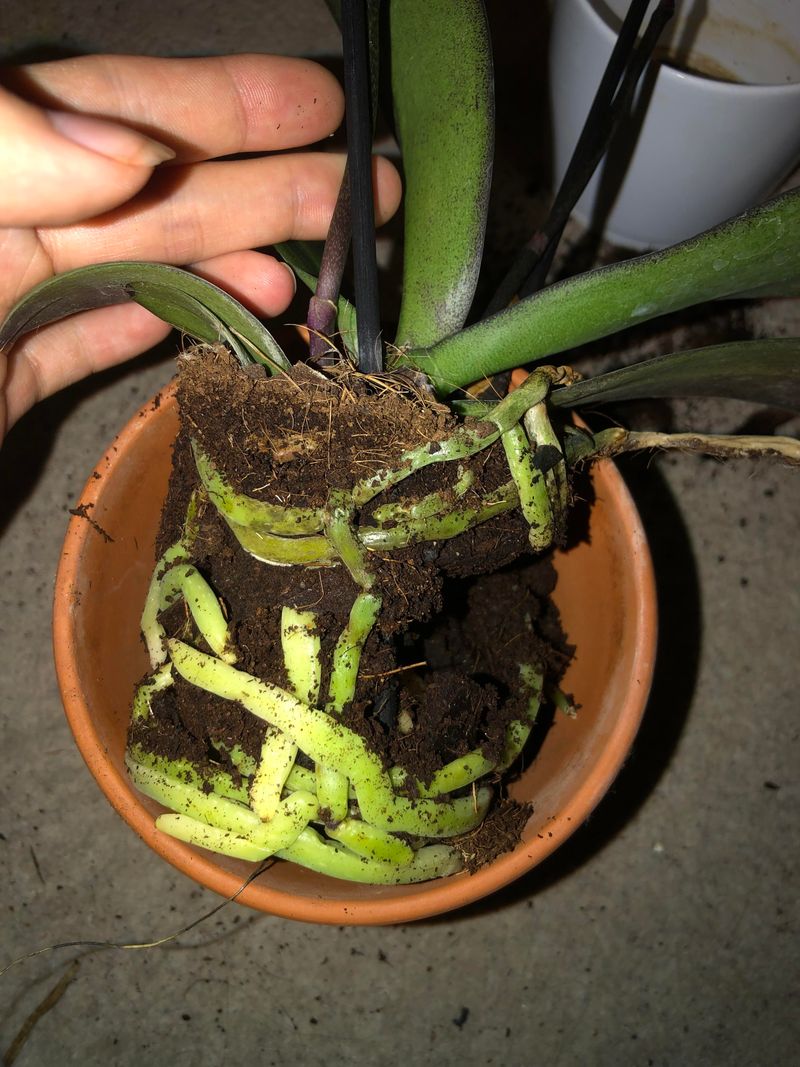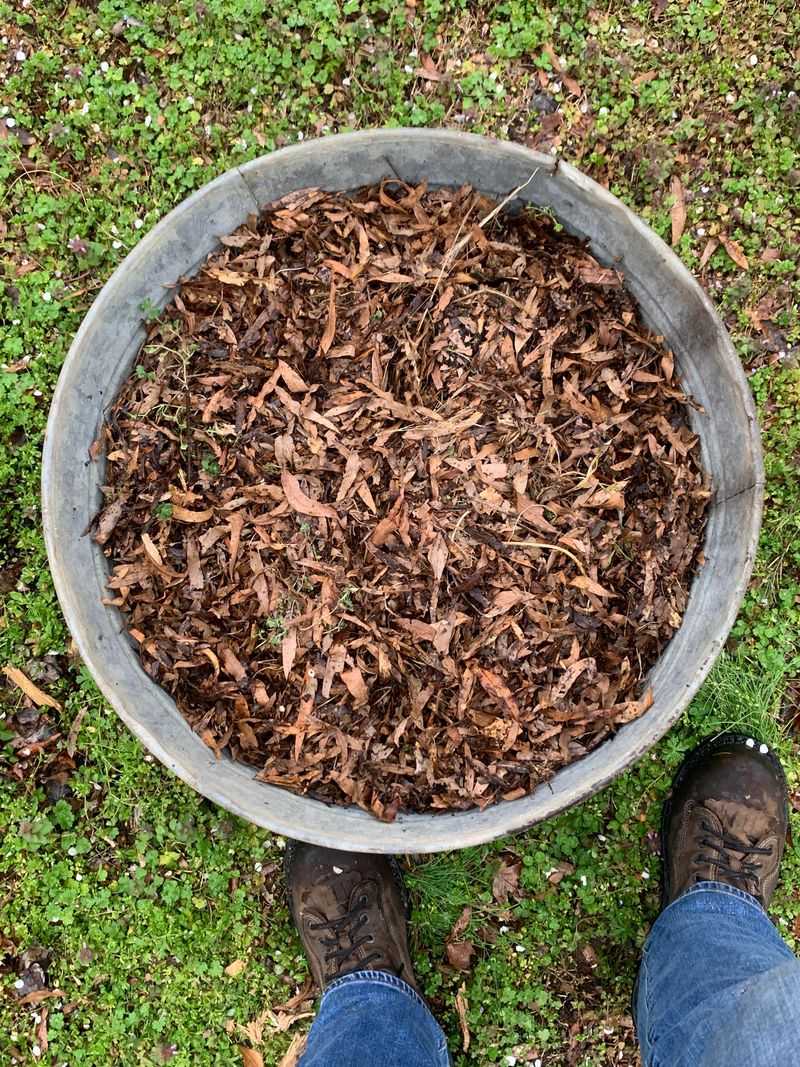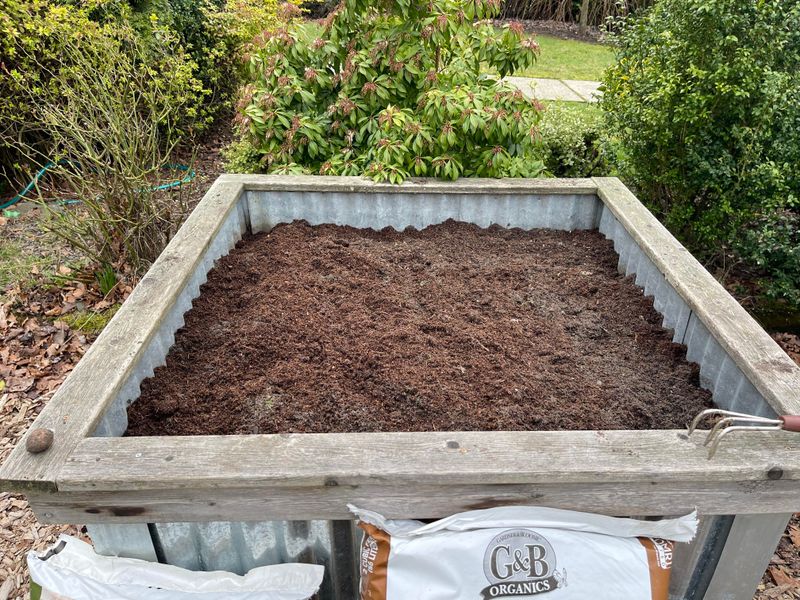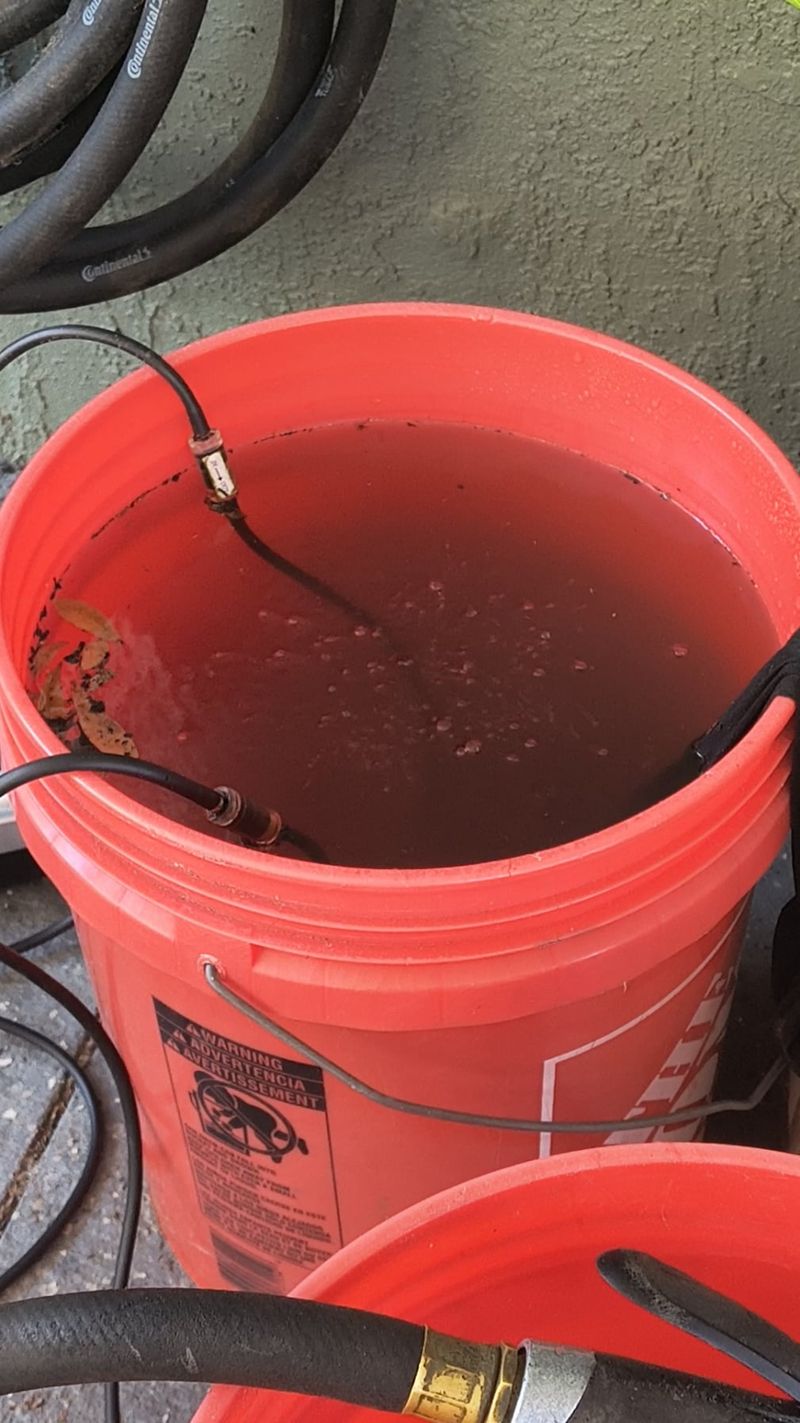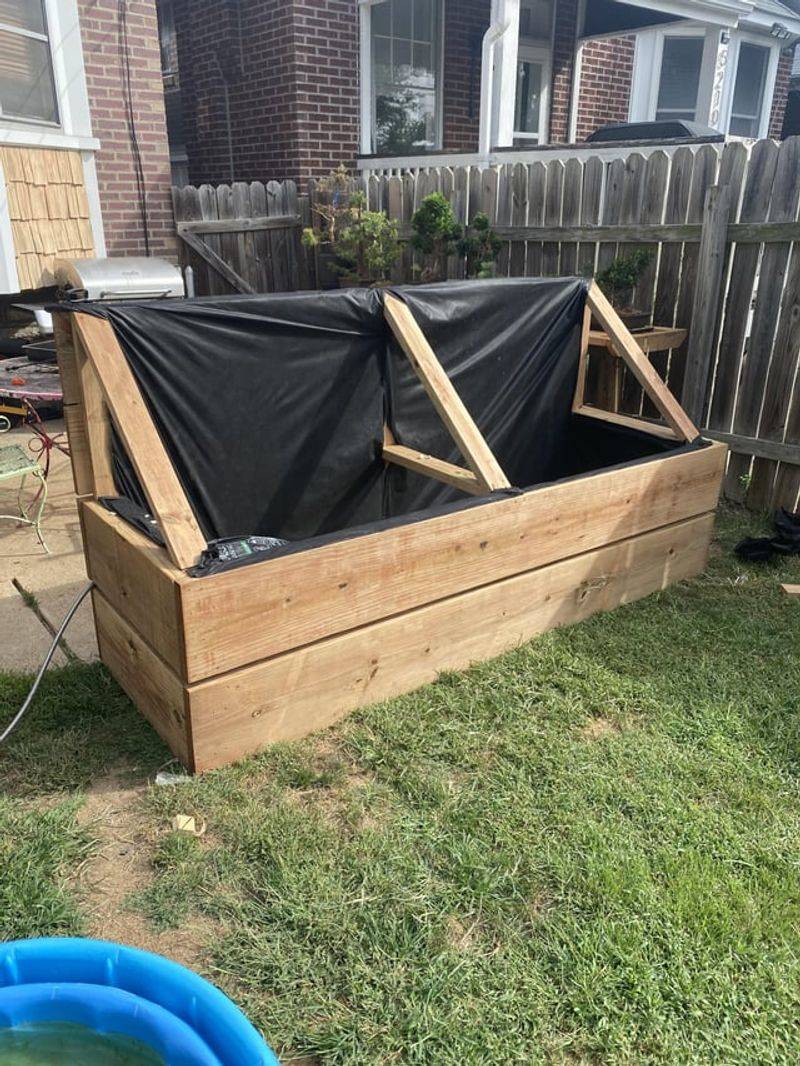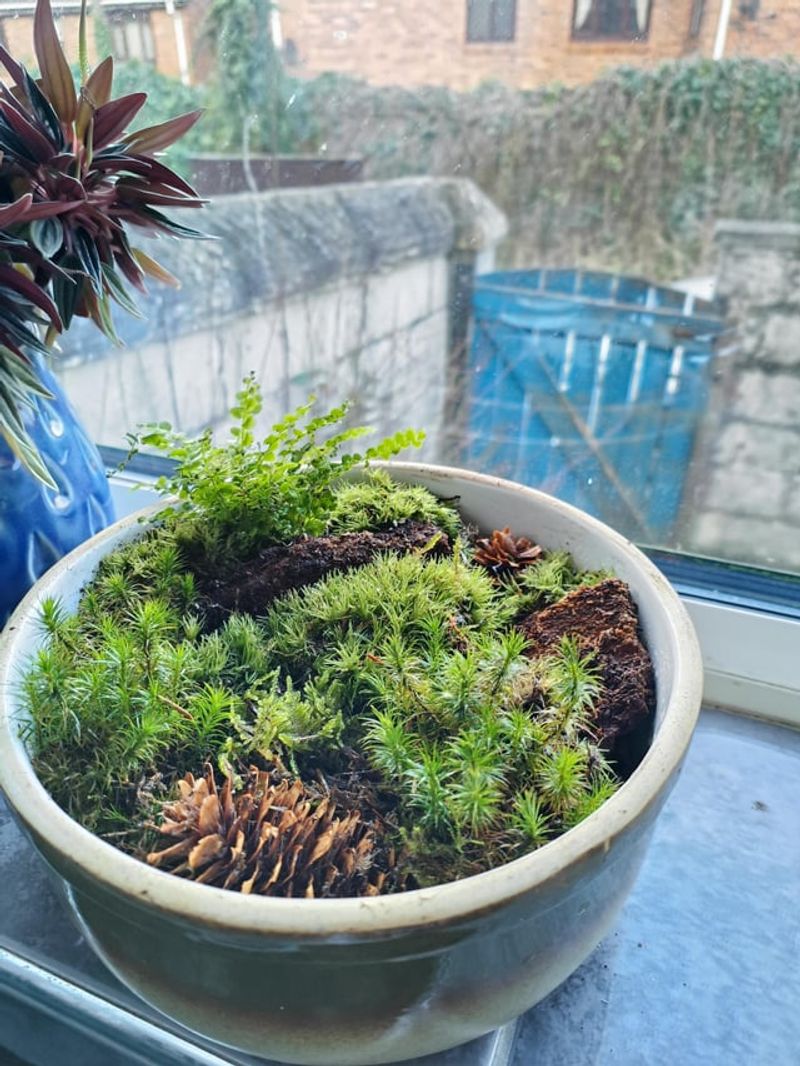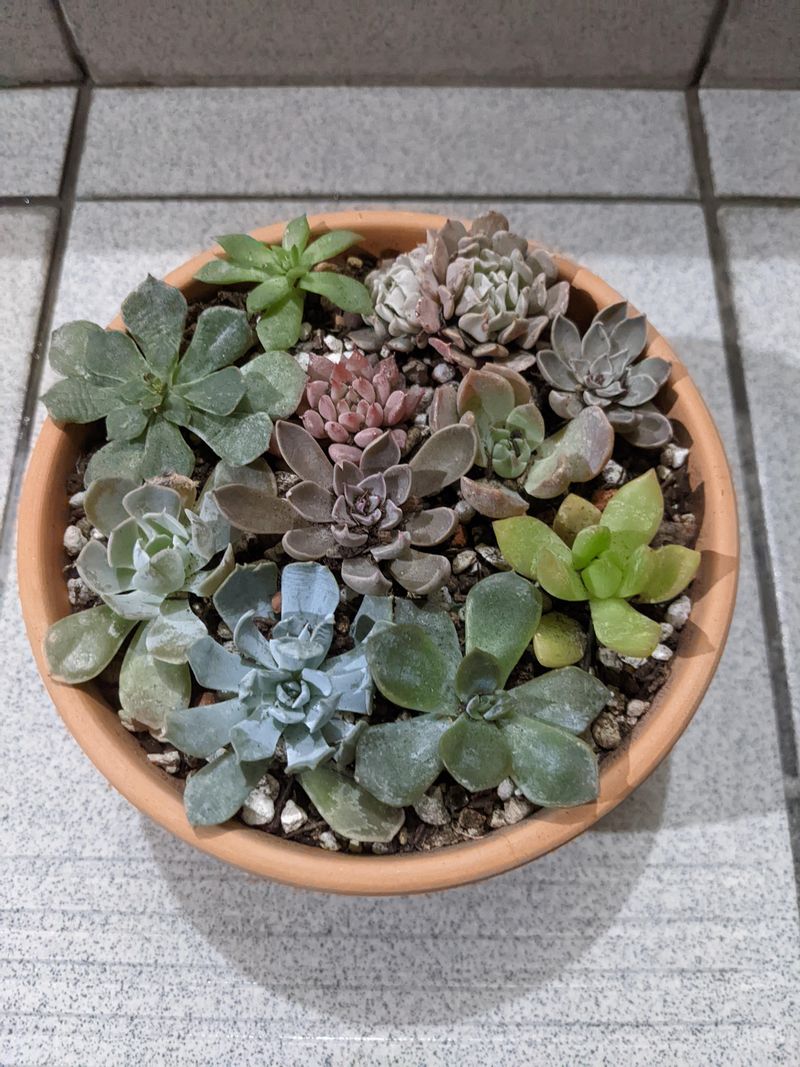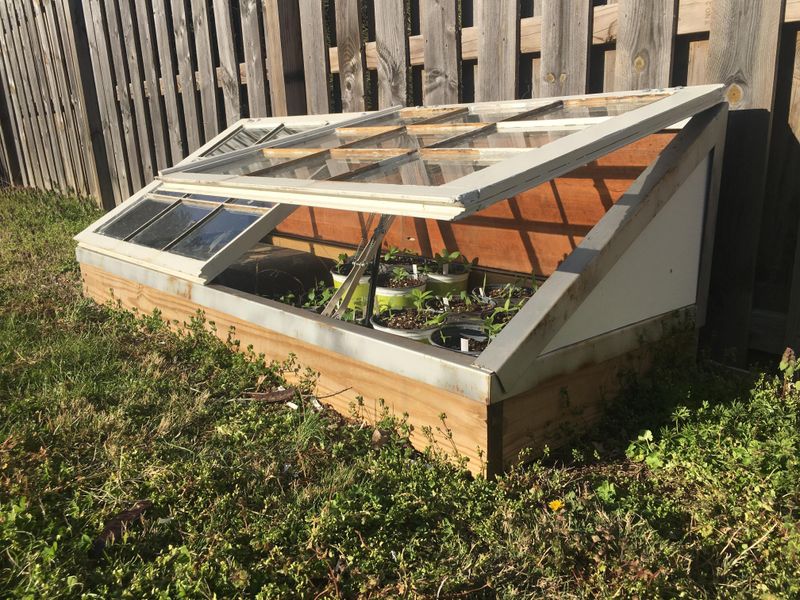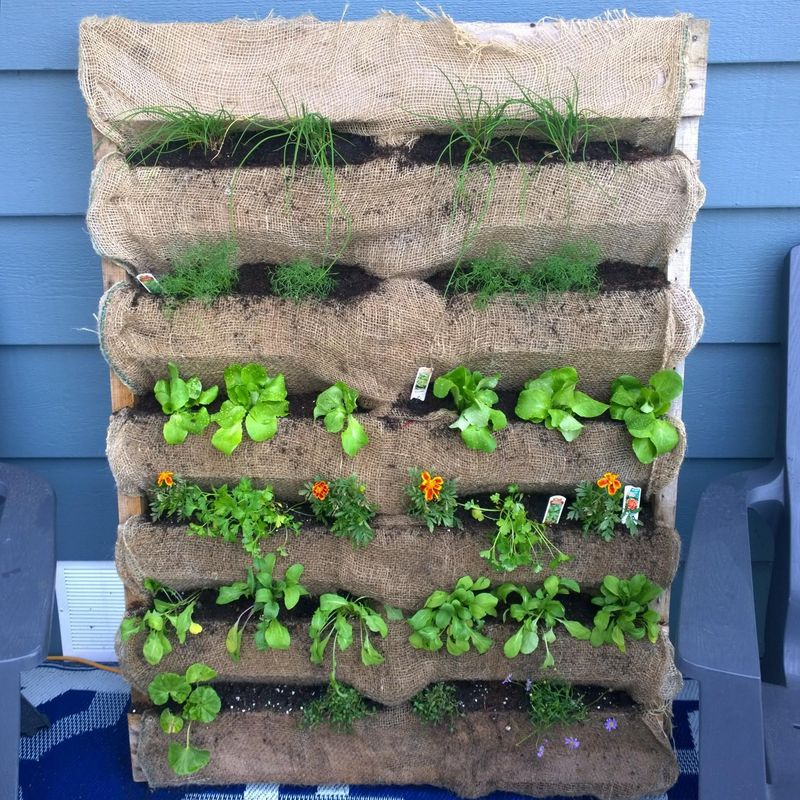Don’t toss that old potting soil just yet—it’s got more to give than you think. I’ve kept mine going season after season with a few simple tricks, and it’s made a big difference.
It’s easier than you’d expect to freshen it up and put it back to work. From veggie beds to flower pots, I’ve found ways to reuse every last bit.
Let’s give that soil a new job and keep the garden happy while we’re at it.
1. Compost Booster
Transforming old potting soil into a compost booster is a gardener’s delight. The soil, already rich with organic materials, acts as a catalyst in the composting process. Simply mix it with kitchen scraps and yard waste.
By integrating it into your compost pile, you accelerate decomposition, resulting in nutrient-rich compost. This enhanced compost can then be used to revitalize garden beds or nourish potted plants.
For an extra touch, consider adding worm castings. The combination will transform your compost into a powerhouse of nutrients, ready to give your garden the boost it deserves.
2. Pathway Filler
Old potting soil finds a new purpose as a pathway filler. Its fine texture makes it ideal for filling gaps between stepping stones or bricks.
The color contrasts beautifully with vibrant garden greens, creating a picturesque walkway. Ensure to compact the soil to prevent erosion.
This simple change not only enhances aesthetics but also minimizes weed growth between stones. Imagine strolling through a garden path, knowing each step is supported by recycled soil. It’s an eco-friendly touch that complements any outdoor space, adding both functionality and charm.
3. Soil Amendment
Enhance your garden’s vitality with an old potting soil amendment. Enriching garden beds with recycled potting soil adds essential nutrients and improves soil structure.
Mix it into existing soil to increase water retention and aeration, ideal for vegetable gardens. The blend ensures healthier roots and robust plant growth.
Embrace the satisfaction of knowing your flourishing garden owes its strength to recycled materials. This method encourages sustainable gardening practices, offering a practical solution for soil rejuvenation without the need for chemical fertilizers.
4. Seed Starter Mix
Old potting soil transforms effortlessly into a seed starter mix. Its loose texture is perfect for nurturing delicate seedlings.
By mixing it with a bit of sand and perlite, you create an ideal environment for seeds to germinate. The recycled soil retains moisture yet provides essential drainage, fostering healthy root development.
Watching new life sprout from soil once considered used is a rewarding gardening experience. It’s an economical way to give seedlings a strong start, all while reducing waste and embracing a sustainable gardening approach.
5. Mulch Alternative
Old potting soil can serve as an effective mulch alternative. Spread it around the base of plants to help retain moisture and suppress weeds.
The soil creates a barrier, reducing evaporation and keeping roots cool. It’s especially useful in flower beds and vegetable gardens.
This simple reuse not only conserves water but also enhances soil fertility over time. Enjoy the dual benefits of weed control and increased plant health, all from garden leftovers. It’s a smart, sustainable choice for any gardener looking to maximize resources.
6. Erosion Control
Utilize old potting soil for erosion control on slopes and hillsides. Its composition aids in stabilizing soil, preventing runoff during heavy rains.
Spread it evenly over areas prone to erosion, mixing with grass seeds or ground cover plants for added stability. This approach not only protects your landscape but also enriches the soil with organic matter.
Beyond practicality, it offers an environmentally friendly solution to a common landscaping challenge. It’s a win-win for both your garden and the planet, showcasing the versatility of recycled soil.
7. Potted Plant Revitalizer
Revitalize tired potted plants with a boost of old potting soil. Mixing it with fresh potting mix breathes new life into wilting plants.
The added organic matter enhances soil structure and nutrient availability, promoting vigorous growth. With proper drainage and regular watering, plants soon thrive.
This method is a cost-effective way to rejuvenate indoor and outdoor containers, ensuring your plants display vibrant blooms and lush foliage. Embrace the satisfaction of transforming neglected pots into flourishing showcases of nature’s beauty.
8. Raised Bed Enrichment
Breathe life into raised beds by supplementing them with old potting soil. Its rich organic content improves drainage and aeration, crucial for healthy plant roots.
Combine with compost to create a fertile growing environment for vegetables and flowers. This nurturing mix encourages robust crop production and blooms.
It’s an efficient way to recycle resources, minimizing waste while maximizing garden productivity. Let your raised beds thrive with renewed vigor, thanks to the simple addition of recycled potting soil.
9. Clay Soil Conditioner
Transform stubborn clay soil with the help of old potting soil. Its organic matter breaks up compacted clay, improving texture and drainage.
Blend it thoroughly, and watch as the soil becomes more workable, encouraging healthy plant roots. This simple amendment can turn a challenging garden spot into a productive one.
Embrace the ease of planting and cultivating in soil that’s been softened and enriched by recycled materials. It’s a gardener’s trick for converting tough terrain into fertile ground, perfect for a thriving garden.
10. Wildlife Habitat Creation
Old potting soil can be repurposed to create wildlife habitats. By shaping it into mounds and depressions, you provide shelter for insects and small creatures.
This natural habitat attracts beneficial wildlife, supporting a balanced ecosystem in your garden. Planting native vegetation around these areas further enhances the habitat.
It’s a simple yet effective way to enrich biodiversity, turning unused soil into a haven for nature’s small wonders. Witness the vibrant life that flourishes in the nooks and crannies created by your sustainable gardening efforts.
11. Herb Spiral Construction
Craft a stunning herb spiral using old potting soil as the primary fill. This vertical garden design maximizes space and creates a microclimate for herbs.
The soil’s organic content supports strong growth, while the spiral shape allows for different sun and moisture conditions. Herbs like basil, thyme, and rosemary thrive in this environment, offering fresh flavors for your kitchen.
It’s a practical and aesthetic solution, turning recycled soil into a functional garden feature. Enjoy the culinary delights and visual appeal of your herb spiral, all thanks to ingenuity and sustainability.
12. Top Dressing for Lawns
Revitalize your lawn with a top dressing of old potting soil. Spread a thin layer over the grass to improve soil structure and nutrient content.
This practice promotes lush, green growth and enhances drought resistance. The recycled soil adds organic matter, supporting healthy microbial activity.
Grass roots thrive in this enriched environment, resulting in a more resilient and attractive lawn. Turn your garden remnants into a resource that keeps your lawn vibrant and healthy all season long.
13. Berm Construction
Elevate your garden design with a berm constructed from old potting soil. These raised mounds add dimension and drainage, perfect for showcasing plants.
The recycled soil provides a nutritious base for ornamental grasses and flowering plants. Berms create visual interest and serve as natural water flow barriers.
This landscaping technique transforms flat spaces into dynamic displays of texture and color. Let your creativity flow as you repurpose old soil into beautiful garden sculptures that support both aesthetics and functionality.
14. Root Ball Support
Support root balls with old potting soil during transplanting. Its loose texture fills gaps around roots, ensuring stability and encouraging growth.
By providing a comfortable environment, transplanted trees and shrubs establish more quickly. The organic content of the soil aids in moisture retention and nutrient supply.
This approach reduces transplant shock and fosters healthier plants. Transform your garden transitions into seamless successes, knowing that recycled soil plays a pivotal role in your gardening endeavors.
15. Garden Sculpture Foundation
Use old potting soil as a foundation for garden sculptures. Its density and stability make it an excellent base material for creative projects.
Whether crafting whimsical figures or abstract forms, this eco-friendly foundation supports artistic expression. Surround sculptures with vibrant foliage for added effect.
This innovative reuse not only beautifies your garden but also showcases sustainable art. Let your creativity shine as you turn soil remnants into the groundwork for visual delights.
16. Potting Bench Fill
Transform your potting bench into a mini oasis with old potting soil. Store it in bins for easy access during planting sessions.
The soil’s presence adds a touch of authenticity to your gardening space, inviting creativity and productivity. Use it for mixing custom soil blends or as a handy filler when repotting.
This practical organization makes gardening tasks more efficient and enjoyable. Embrace the charm of a well-stocked potting bench, where recycled soil is ready to assist in your horticultural endeavors.
17. Terrarium Base Layer
Create a stunning terrarium with old potting soil as the base layer. Its richness supports a variety of plants, from mosses to succulents.
The soil provides both aesthetic appeal and essential nutrients, forming a stable foundation for your miniature ecosystem. Add decorative stones and plants for a visual masterpiece.
This small-scale garden brings a touch of nature indoors, showcasing your love for sustainability. Delight in the intricate beauty of a terrarium built on reclaimed materials.
18. Biofilter Medium
Old potting soil finds a unique role as a biofilter medium in aquaponics. Its structure supports beneficial bacteria, essential for filtering water in fish tanks.
This symbiotic relationship ensures clean water for fish and nutrient-rich water for plants. The recycled soil enhances biological filtration, improving system efficiency.
Embrace this innovative use, where gardening meets aquaculture, and witness the harmony of an ecosystem sustained by repurposed materials. It’s a testament to the versatility and value of old potting soil.
19. Orchid Bark Substitute
Substitute traditional orchid bark with old potting soil for a sustainable planting option. The soil’s composition supports orchid roots, retaining moisture while providing aeration.
This alternative reduces the need for imported substrates, promoting eco-friendly practices in orchid care. Orchids thrive with the right balance of moisture and air, beautifully showcasing their exotic blooms.
Enjoy the satisfaction of nurturing these elegant plants with recycled materials, knowing your choice benefits both the environment and your garden. It’s a fresh approach to orchid cultivation that aligns with sustainable living.
20. Hügelkultur Bed Filler
Fill a hügelkultur bed with old potting soil to create a self-sustaining garden. The soil caps a layer of logs and organic matter, enhancing water retention and nutrient cycling.
This method mimics natural decomposition, providing a fertile environment for vegetables and flowers. It’s an innovative way to repurpose soil and garden waste into a productive system.
Revel in the benefits of a hügelkultur bed, where nature’s processes are harnessed to yield abundant harvests. It’s a thriving example of gardening in harmony with the earth’s cycles.
21. Flower Bed Refresher
Refresh tired flower beds by integrating old potting soil. The organic richness revives soil structure, promoting healthy root growth and vibrant blooms.
Mix it into existing beds to enhance drainage and nutrient availability. The recycled soil breathes new life into your garden, supporting a colorful display throughout the growing season.
This simple addition transforms underperforming beds into thriving patches of floral beauty. Let your garden shine with the brilliance of refreshed flower beds, all thanks to the humble potting soil.
22. Compost Tea Ingredient
Brew nutrient-rich compost tea using old potting soil as an ingredient. This liquid fertilizer nourishes plants with essential nutrients and beneficial microbes.
Soak the soil in water, allowing its richness to infuse the brew. Strain and apply to garden beds or potted plants for an instant nutrient boost.
Experience the satisfaction of feeding your garden with homemade solutions, reducing waste and enhancing plant health. It’s a sustainable practice that turns garden remnants into a valuable resource.
23. Planter Box Insulation
Use old potting soil to insulate planter boxes, protecting roots from temperature extremes. The soil acts as a buffer, maintaining a stable environment for plants.
This technique is especially useful in areas with fluctuating climates, ensuring plant survival and growth. The recycled soil provides both insulation and nutritional benefits.
Enjoy peace of mind knowing your plants are shielded from harsh conditions, supported by a resourceful use of materials. It’s a thoughtful approach to garden care that emphasizes sustainability.
24. Moss Garden Base
Create a tranquil moss garden using old potting soil as the base. Its moisture-retaining properties support lush moss growth, enhancing garden serenity.
Complemented by stones and water features, the garden becomes a peaceful retreat. This use of recycled soil adds depth and texture to your landscape.
Delight in the calming beauty of a moss garden, where nature’s simplicity is celebrated. It’s an artistic expression of sustainable gardening that invites relaxation and reflection.
25. Succulent Planter Foundation
Build a sturdy foundation for succulent planters with old potting soil. Its drainage properties are ideal for these drought-tolerant plants.
Layer with sand or gravel for optimal moisture control, ensuring healthy succulent roots. The recycled soil offers a sustainable option for crafting beautiful arrangements.
Watch as your succulents thrive, exhibiting diverse shapes and colors against the simplicity of their foundation. It’s a testament to the understated elegance of sustainable gardening, where function meets form.
26. Cold Frame Fill
Fill cold frames with old potting soil to extend the growing season. The soil’s organic content provides warmth and nutrients for early seedlings.
Protected by a transparent cover, seedlings thrive in this controlled environment. The recycled soil supports robust growth, allowing for earlier planting and harvests.
This practical use of old soil enhances gardening efficiency, maximizing productivity in small spaces. Enjoy the benefits of fresh produce, nurtured by the resourceful use of potting soil.
27. Vertical Garden Support
Support vertical gardens with old potting soil. Perfect for wall planters, its structure ensures adequate drainage and nutrient supply.
Plant herbs and flowers in soil-filled pockets, transforming walls into lush, living art. The recycled soil contributes to sustainable urban gardening.
Revel in the beauty of a vertical garden, where space limitations are overcome with creativity. It’s a dynamic solution that brings greenery to urban landscapes, supported by the humble potting soil.

